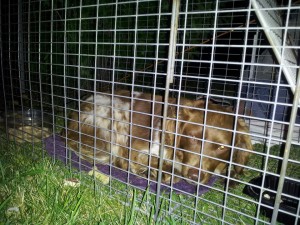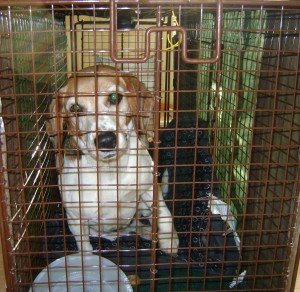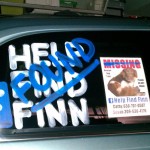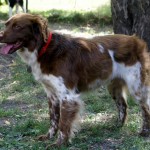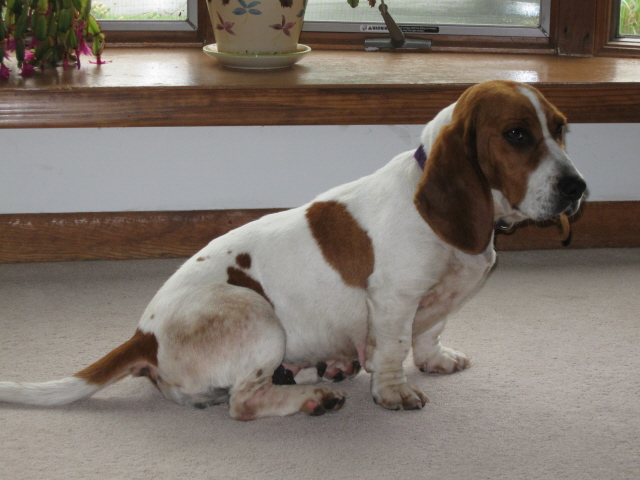
Two Illinois based rescues joined together to facilitate Ellie, shy foster dog, return. 30 days later Ellie was trapped.
Effectively coordinating your volunteers in the search for a lost dog is what we call “harnessing the energy”. When everybody is on the same team and pulling in the same direction, great things can happen. When the efforts are scattered and fragmented, volunteers will get frustrated and the search can end badly.
This article will focus on the steps to help your rescue or shelter’s volunteers work effectively as a team to generate sightings of the missing dog.
First and foremost – please make sure that you have done the Five Things to Do If You Have Lost Your Dog. Putting scent items and food at the spot where the dog went missing from will help keep him in the area – even if he is unfamiliar with the location.
1. Assign one “point person”. Preferably this is the person that is most bonded with the lost dog (the owner or foster parent) and with the biggest emotional committment to the process. The point person must be a responsible individual with the time required to be able to answer EVERY phone call and go to every sighting location. The point person must be dedicated to the process for the days, weeks or months that it might require to successfully catch the dog.
2. Use a phone number on the flyer that will be answered promptly. Do not use a shelter phone number that won’t be answered during closed hours. Do not use an automated voice system or answering service. Many people who see your dog won’t call again. They will try ONCE. If you miss the opportunity to speak with them, you may never get another chance and you might miss valuable information about your dog’s location. Do not rely on texting. Callers need to hear your voice and your emotional commitment to the dog. This will encourage them to keep helping you.
3. Change the message on your phone to include a message about the missing dog. If the caller reaches an ordinary voice message, he may hang up and not try again. The caller must know they’ve reached the correct number to report a sighting.
4. Do NOT offer a reward for the missing dog. In our experience, this is almost always a bad idea. Rewards encourage people to chase the dog, possibly into oncoming traffic. A dog that is being pursued for a reward will not settle and will become more and more elusive and possibly move out of the area altogether. Then you will have to start all over in a new location. You want sightings of the dog so that you can implement a plan to catch him safely. Rewards are counterproductive to this effort because you will not be able to pay a reward for each sighting.
5. In the early hours of the dog going missing; rescue volunteers may panic and want to rush to a sighting location to “search”. This is almost always a bad idea. Their energy should be used for quickly flyering the area – going door to door and trying to speak to as many people as possible and leaving a flyer in their hands. Searching for a shy lost dog will chase the dog out of the area and possibly into the path of traffic. Or the dog may go into hiding, reducing sightings and prolonging the search. Your goal is to let the shy lost dog settle, without the pressure of being pursued. You will have a much greater chance of catching him.
6. The point person should be organized and ready to distribute maps and flyers to the volunteers. Use a Rubbermaid tub in a central location to store flyers, maps and supplies. Then anyone with some time to spare can do some flyering without duplicating efforts.
7. Don’t congregate noisily in an area to flyer. Don’t slam car doors. The dog may be hidden somewhere nearby watching you. Too much activity may frighten him into leaving the area. Flyer in groups of two for safety, but be quiet and calm.
8. Pace your volunteers. Make sure they understand that this could take weeks or months. Volunteers will be needed to flyer after every sighting, to make and move signs, to update Craigslist, radio, and newspaper ads and to keep notifying vet clinics, shelters, etc.
9. Try to keep everyone “in the loop” so they feel useful and engaged. Consider using a closed Facebook group for the volunteers to keep everyone informed. Stay positive. Negativity won’t help and will probably prolong the search. Don’t waste any time in assigning blame for how or why the dog went missing. This does nothing to help find the dog and will decrease the morale of the team.
Next, we’ll focus on the best way to respond when you get your sighting calls.
Part 4 https://www.lostdogsillinois.org/harnessing-the-energy-part-4/
Previous Article https://www.lostdogsillinois.org/harnessing-the-energy-part-2/

